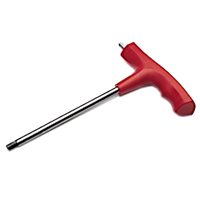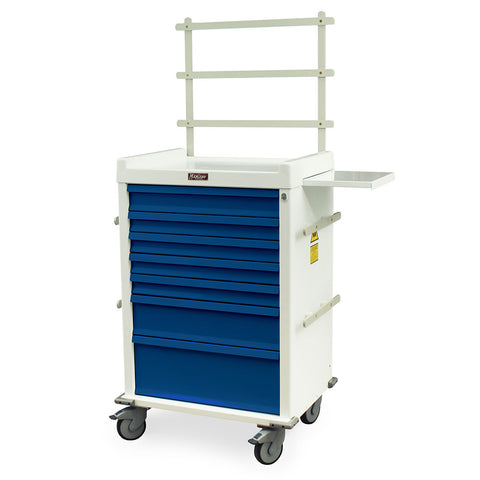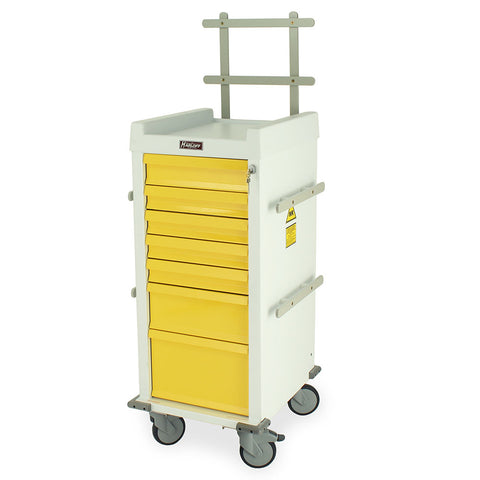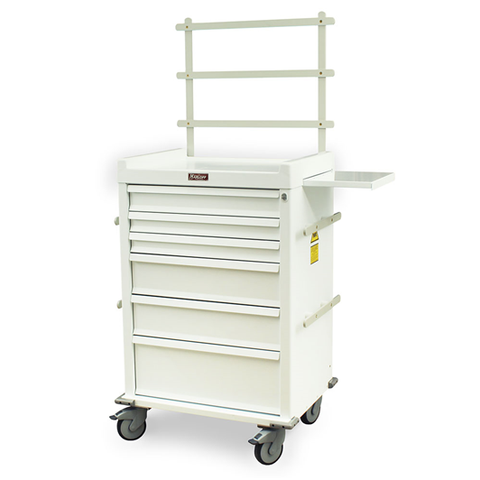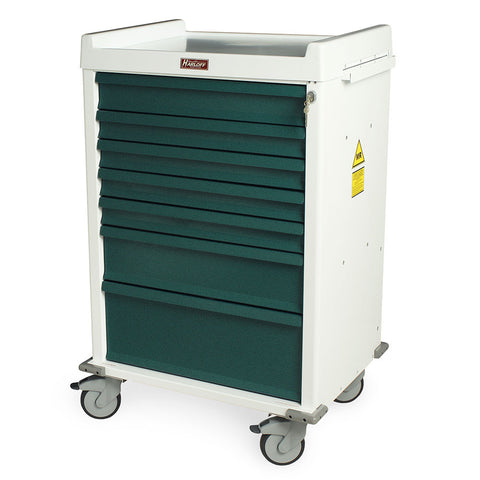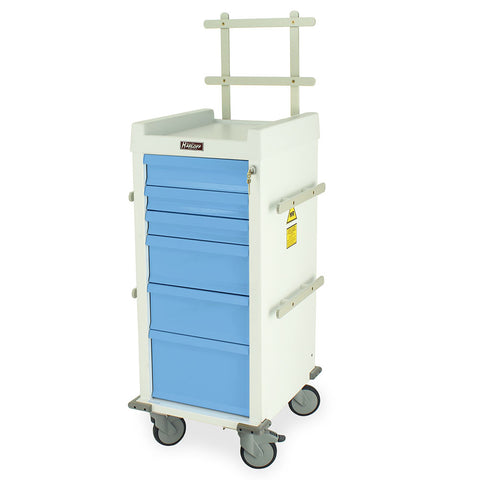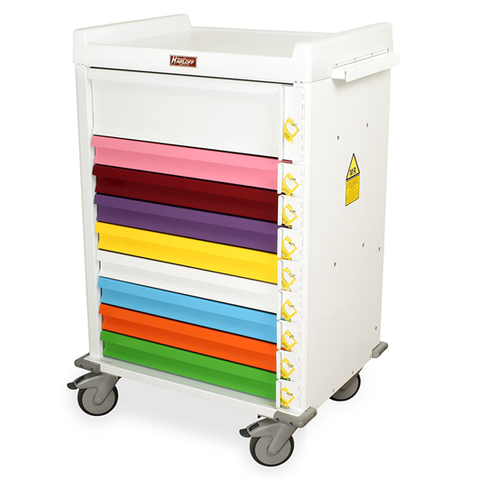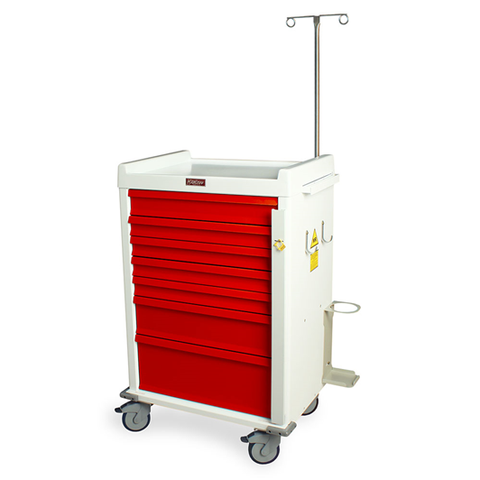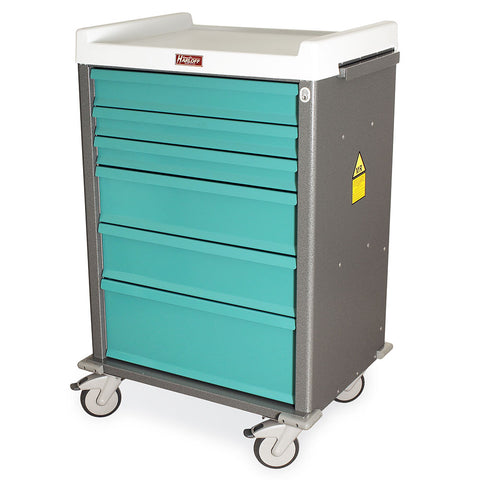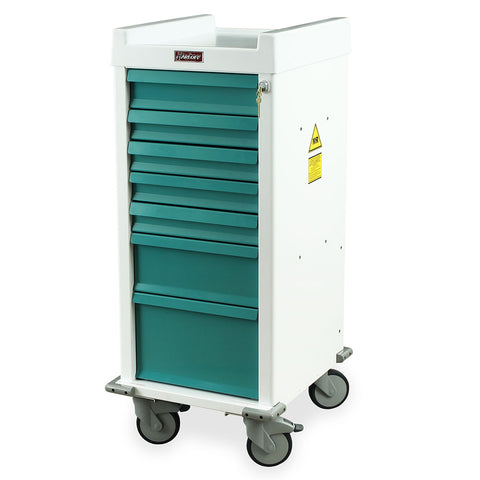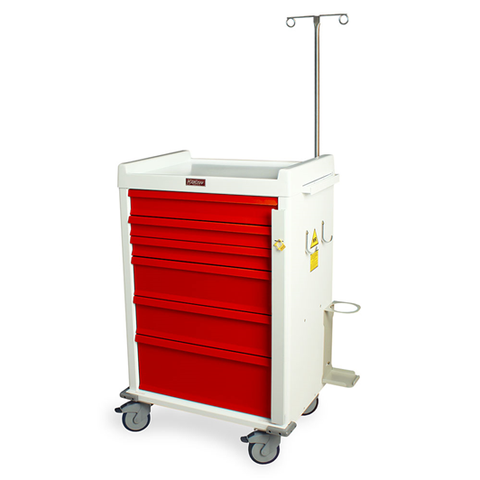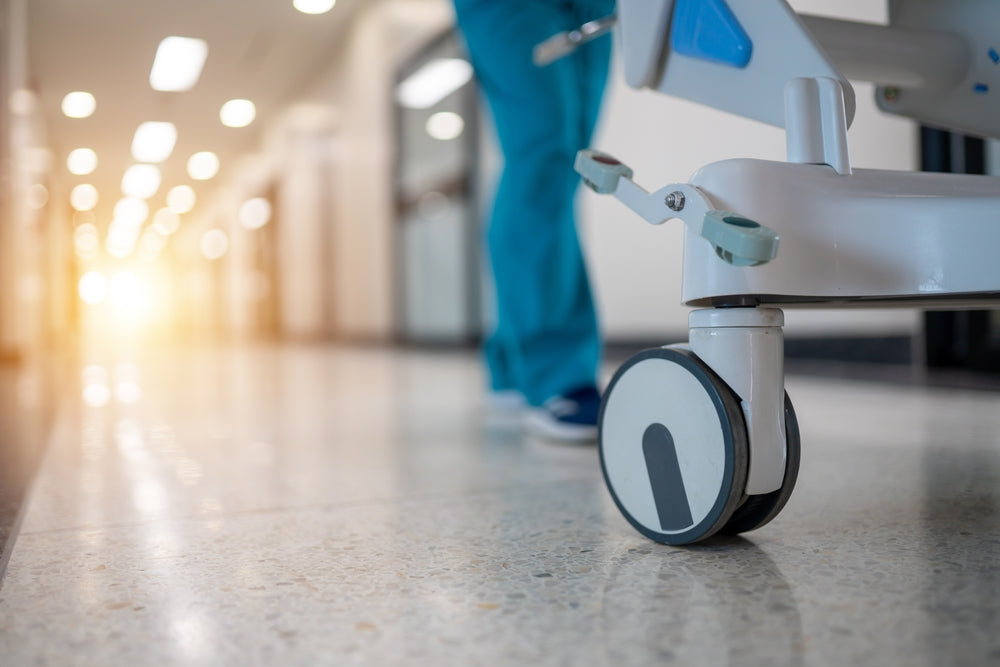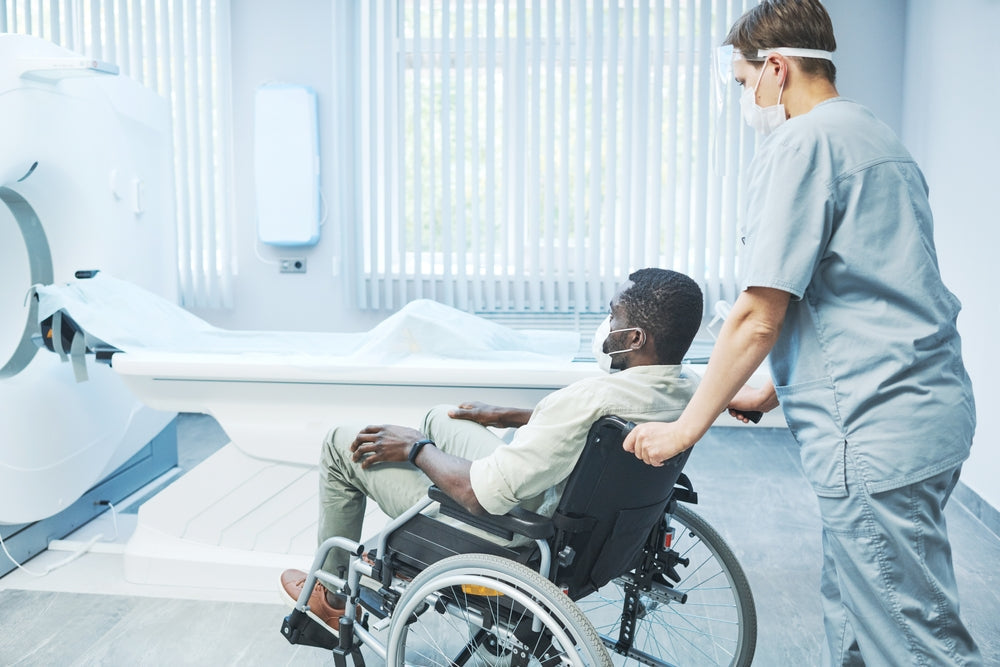When it comes to patient transport within MRI environments, safety and compatibility are paramount. An MRI-Conditional stretcher is specifically designed to be used in the magnetic resonance imaging (MRI) suite without interfering with the MRI's magnetic field. This ensures both patient safety and the integrity of the imaging process. At MRI Med, we offer a range of MRI-Conditional stretchers tailored to meet these stringent requirements.
Understanding MRI-Conditional Stretchers
What Does “MRI-Conditional” Mean?
The term "MRI-Conditional" refers to equipment that is safe for use in an MRI environment under specified conditions. These conditions are typically defined by the manufacturer and may include limitations on the magnetic field strength (measured in Tesla), the proximity to the MRI scanner, and the duration of exposure. It's crucial to adhere to these guidelines to ensure safety.
How MRI Magnetic Fields Affect Medical Equipment
MRI machines generate powerful magnetic fields that can interact with ferromagnetic materials, potentially causing them to move or heat up. This interaction can be hazardous to both patients and healthcare providers. Therefore, MRI-Conditional stretchers are constructed from non-ferrous materials that do not react with the magnetic field, ensuring safe patient transport within the MRI suite.
MRI Safety Standards You Need to Know (ASTM F2503)
The ASTM F2503 standard provides guidelines for labeling medical devices as MRI-Safe or MRI-Conditional. An MRI-Conditional label indicates that the device has been tested and is safe for use in an MRI environment under specific conditions. Adhering to this standard helps healthcare facilities maintain safety and compliance.
Materials and Design Features That Make a Stretcher MRI-Safe
Non-Ferrous Construction (Aluminum, PVC, and Specialty Alloys)
MRI-Conditional stretchers are typically made from non-ferrous materials such as aluminum, PVC, and specialty alloys. These materials do not contain iron, cobalt, or nickel, which are magnetic metals, thereby preventing any interference with the MRI's magnetic field. For instance, the MRIMed Non-Ferrous Stretcher is constructed with durable aluminum, offering exceptional durability and a weight capacity of up to 500 pounds.
Non-Magnetic Wheels, Casters, and Fasteners
To ensure complete safety, MRI-Conditional stretchers are equipped with non-magnetic wheels, casters, and fasteners. These components are made from materials that do not interact with the MRI's magnetic field, allowing for smooth and safe transportation of patients within the MRI suite.
MR-Conditional Accessories and Attachments
Accessories and attachments used with MRI-Conditional stretchers, such as IV poles and oxygen holders, are also designed to be MRI-conditional. For example, the MRIMed Stainless Steel Non-Magnetic Bariatric Stretcher offers optional accessories like an IV pole (TR-125) or oxygen holders (TR-126), ensuring comprehensive compatibility with MRI environments.
Testing and Certification of MRI-Conditional Stretchers
How Manufacturers Test Equipment for MRI Environments
Manufacturers test MRI-Conditional stretchers by exposing them to the magnetic field of an MRI scanner to assess their behavior. This includes evaluating whether any parts move, heat up, or cause artifacts in the imaging process. Only equipment that passes these rigorous tests is labeled as MRI-Conditional.
Understanding MRI Field Strength Ratings (1.5T, 3T, and Beyond)
MRI scanners operate at various field strengths, measured in Tesla (T). The most common are 1.5T and 3T. MRI-Conditional stretchers are tested for compatibility with specific field strengths. For instance, the MRIMed Bariatric Aluminum Non-Magnetic Stretcher is designed for use in MRI environments up to 3 Tesla.
Importance of ASTM and FDA Labeling Compliance
Compliance with ASTM standards and FDA regulations ensures that MRI-Conditional stretchers meet safety and performance criteria. This labeling provides healthcare facilities with confidence that the equipment has been tested and is safe for use in MRI environments under specified conditions.
Benefits of Using MRI-Conditional Stretchers
Improved Patient Safety During Scans
MRI-Conditional stretchers are designed to eliminate risks associated with magnetic interference, ensuring that patients are transported safely within the MRI suite. This reduces the likelihood of accidents and enhances overall patient safety during scans.
Reduced Liability and Regulatory Compliance
Using MRI-Conditional stretchers helps healthcare facilities comply with safety standards and regulations, reducing the risk of liability. Adhering to these guidelines demonstrates a commitment to patient safety and regulatory compliance.
Operational Efficiency for MRI Suites
MRI-Conditional stretchers are designed for easy maneuverability, allowing healthcare providers to transport patients efficiently within the MRI suite. This enhances workflow and reduces delays, contributing to overall operational efficiency.
Equip Your Team with Tools They Can Trust
Get high-quality, MRI-dedicated equipment that supports safer scans, better positioning, and smoother patient care.
View Trusted ProductsHow to Identify Genuine MRI-Conditional Stretchers
Reading Product Labels and Documentation
Genuine MRI-Conditional stretchers will have clear labeling indicating their compatibility with MRI environments. This includes information on the maximum magnetic field strength they can be used with and any other relevant conditions. Always refer to the manufacturer's documentation for detailed specifications.
Common Marketing Myths to Avoid
Be cautious of marketing claims that do not provide specific information about MRI compatibility. Terms like "MRI-safe" or "MRI-conditional" without clear specifications may not meet the necessary safety standards. Always verify claims with the manufacturer's documentation.
Why Buying from Trusted Suppliers Matters
Purchasing MRI-Conditional stretchers from reputable suppliers ensures that the equipment meets safety standards and regulations. Trusted suppliers provide detailed product information and support, helping healthcare facilities make informed purchasing decisions.
Choosing the Right MRI-Conditional Stretcher for Your Facility
Key Factors to Consider (Weight, Comfort, Maneuverability)
When selecting an MRI-Conditional stretcher, consider factors such as weight capacity, patient comfort, and maneuverability. For example, the MRIMed Bariatric Aluminum Non-Magnetic Stretcher offers a weight capacity of 600 pounds, ensuring support for bariatric patients.
Matching Stretcher Models to MRI Room Workflow
Choose stretcher models that align with your MRI room's workflow. Consider the stretcher's dimensions, ease of movement, and compatibility with other equipment to ensure seamless integration into your MRI suite.
Cost vs. Long-Term Value Considerations
While cost is an important factor, consider the long-term value of MRI-Conditional stretchers. Investing in high-quality equipment can reduce maintenance costs, improve patient safety, and enhance operational efficiency over time.
FAQ
-
What’s the difference between MRI-Safe and MRI-Conditional?
An MRI-Safe device is one that poses no risk in any MRI environment. An MRI-Conditional device is safe for use in an MRI environment under specific conditions, such as certain magnetic field strengths or distances from the MRI scanner.
-
Can any hospital stretcher be used in an MRI room?
No, not all hospital stretchers are suitable for use in an MRI room. Only stretchers labeled as MRI-Conditional are safe for use in MRI environments.
-
How often should MRI stretchers be inspected or serviced?
MRI stretchers should be inspected regularly for signs of wear and tear. The frequency of inspections depends on usage and manufacturer recommendations.
-
Are MRI-Conditional stretchers compatible with all field strengths?
MRI-Conditional stretchers are tested for compatibility with specific MRI field strengths. Always check the manufacturer's specifications to ensure compatibility with your MRI scanner's field strength.
-
Do I need special staff training to use these stretchers?
While MRI-Conditional stretchers are designed for safe use in MRI environments, staff should be trained in proper handling and safety protocols to ensure patient safety and equipment integrity.
